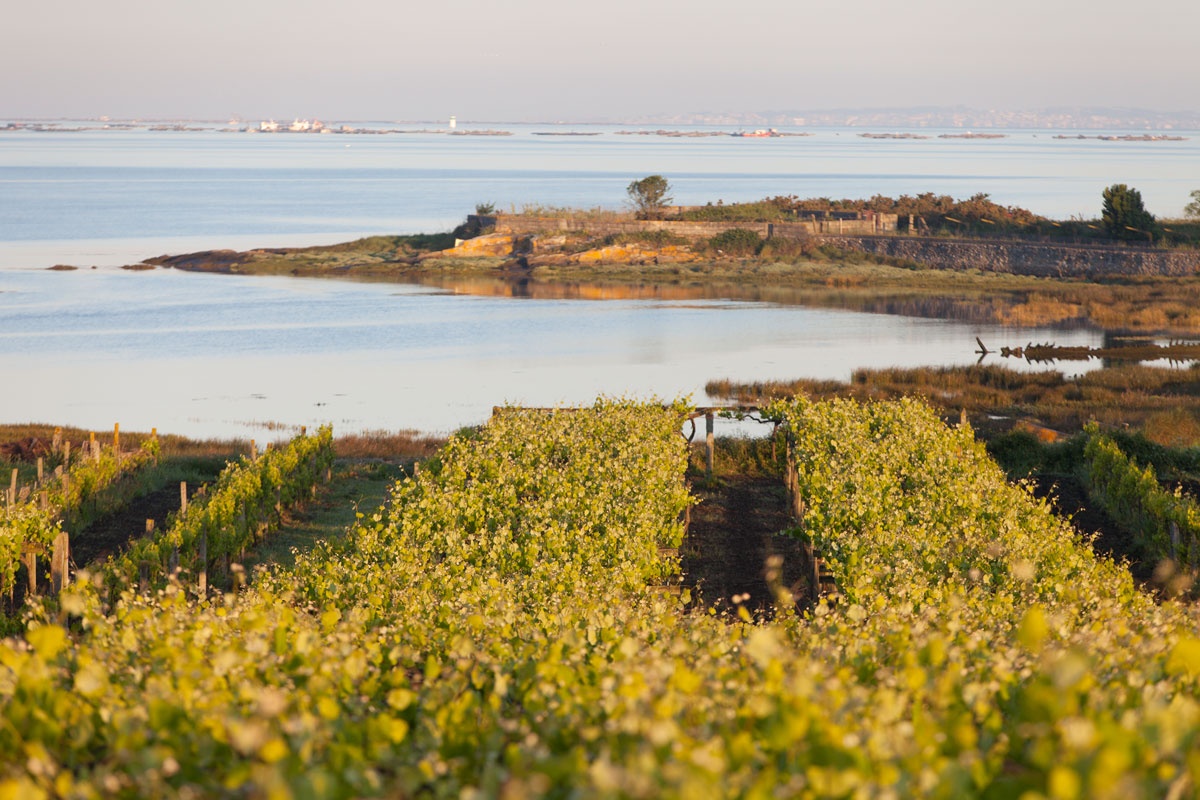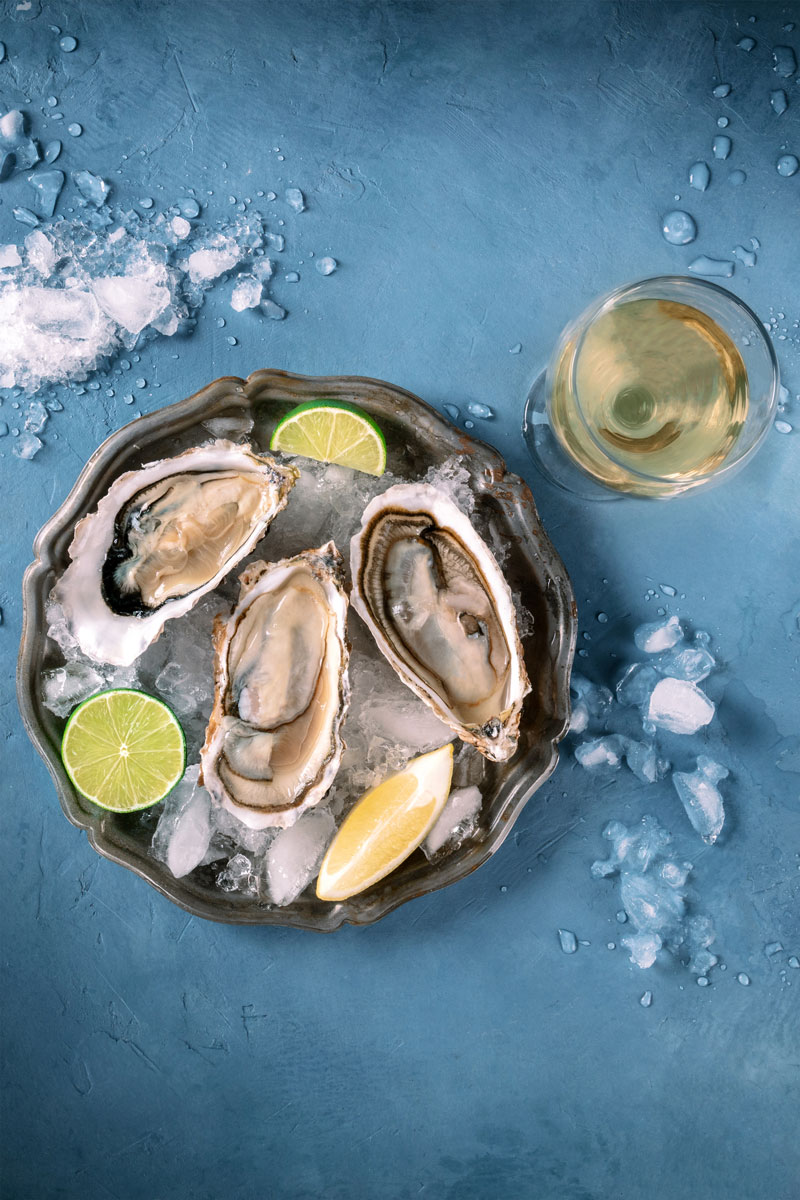
Wine Culture Magazine

Vineyards in Rías Baixas are planted just metres from the ocean, which contributes a salty tang to the grapes. Xurxo Lobato photo courtesy of Rías Baixas
I’ve become a little obsessed lately with wines that have a delicate touch of brine, a hint of the sea, a saline note that makes my mouth water. Where once I gravitated to big, juicy, peppery reds, now I crave wines that taste like oyster shells, all salt and seaweed and sharp minerality.
It started with Chardonnay. Not the rich, buttery, tropical fruit bombs of California and other warm climes, but the cool, elegant Chards of Chablis. They are known for their salty tang, the result of the Kimmeridgian soil they grow in, a former seabed that covered the region and is rich in limestone, chalk and marine fossils.
(Many scientists will tell you it’s not possible to extract flavour from soil, but anyone who has tasted a flinty Syrah from the Similkameen Valley knows differently.)
Chablis wines also have notes of white flowers, citrus and green apples, but it’s that salty note that makes them irresistible to me. They were my gateway salty wines; since that first sip, I’ve discovered many others, with saline sources that go beyond that ancient Kimmeridgian.

Grapes grown in Spain’s Rías Baixas region. Xurxo Lobato photo courtesy of Rías Baixas
Typically, and not surprisingly, most salty wines come from coastal regions. But the flavour can come from either the terroir, certain production methods or a combination of both.
In Spain’s Jerez region, for instance, indigenous cultures in the flor, a yeasty film that covers the surface of wine to prevent oxidative browning in biologically aged sherries, create the savoury, salty notes in Fino and Manzanilla sherries. (Think: notes of green olives and marcona almonds.)
In historic wine regions like Georgia, Slovenia, Croatia and parts of eastern Italy, many white wines have traditionally been made like red ones by fermenting the juice on the skins. The wines are then aged in vessels such as clay amphora or concrete tanks, which allow a greater exchange of oxygen. The resulting “orange” wines feature appealing savoury notes. Now a new generation of winemakers, eager to explore low-intervention techniques, has made orange wines trendy the world over.
Some high-acid varieties taste lightly of salt: Muscadet from France’s Loire Valley, for instance, Greek Assyrtiko, Italian or French Vermentino, and most of all, Spanish Albariño, particularly from the Rías Baixas region. All are known for their saline, mineral and citrus notes. At the same time, as well as ancient seabeds, volcanic and chalky soils are believed to add a salty note to some wines. Etna Bianco, a white wine made from Carricante grapes grown on the slopes of Sicily’s Mount Etna, is a good example. Its savoury and salty character is attributed to the volcanic terroir.
But is it the grape, or where it’s grown, or how the wine is made that makes the difference? Or is it something else entirely?

White wines with salty, minerally notes pair harmoniously with freshly shucked oysters and other seafood. iStock/Getty Images Plus/Cook Shoots Food
Although we may perceive a flavour as “salty,” that doesn’t necessarily mean it actually contains a lot of salt. Each other thing we taste affects how we perceive flavour—and what we smell adds a whole other layer of complexity.
For instance, saltiness increases our perception of sweetness, but reduces our perception of acid. Sweetness reduces our perception of both salinity and acidity. And acidity boosts the perception of both sweetness and salinity, which is why adding a squeeze of lemon juice at the end of cooking, say, a pork chop gives it such an intense flavour boost.
So if we sip a salty wine, it will likely taste sweeter and less acidic than it actually is.
Meanwhile, the aroma of a wine and how it interacts with other characteristics may make us think it’s sweet, or acidic, or salty, when it really isn’t, while certain chemical or mineral compounds that taste salty might also taste bitter, astringent or metallic under different circumstances.
And if all that isn’t confusing enough, scientists really don’t understand how we respond to the taste of salt all that well in the first place.
What we do know, though, is that salty wines go really well with seafood, especially oysters; the acidity, brininess and minerality in the wine complement the briny minerality of the bivalves. They also work with the kind of salty foods that don’t always pair well with wine—fried foods, Spanish jamón and other cured meats, olives and fresh cheeses—but these are truly a seafood lover’s wine.
It’s the perfect example of what grows together, goes together.
Worldwide, one of the most famous regions for producing salty wines is Rías Baixas in northwestern Spain, famous for the saline notes of the Albariño grown here. Indeed, some vineyards are planted mere metres away from seawater. Wind, rain and irrigation spread salty elements onto the granitic soil, where the roots of the vines draw the salt up into the plants, and also onto the surface of the grapes and leaves.
It’s a similar situation in other seaside growing areas, like Santorini, Azores, Madeira, Colares or even in Vancouver Island’s Cowichan Valley, where an afternoon breeze brings with it a microscopic film of salt that gives the local Chardonnays a Chablis-like saline note.
All we know is that wherever they’re from, we love our salty wines, and crave more of them.

Unsworth Vineyards Chardonnay 2022
(Cowichan Valley, $39)
Lemon, apple, blanched almonds, subtle salinity.

Famille Lieubeau Clisson Muscadet 2018
(Sèvre et Maine, Loire Valley, France, $40)
Quince, honeydew, ripe acidity, minerality, robustly salty finish.

Adegas Valmiñor Davila Albariño 2023
(Rías Baixas, Spain, $25)
Fresh, salty, apple, grapefruit, oyster shells.

Joanne Sasvari is editor of Vitis and The Alchemist magazines. She also writes about food and drink for WestJet and Vancouver Sun, and is author of the Wickaninnish and Vancouver Eats cookbooks.

Joanne Sasvari is editor of Vitis and The Alchemist magazines. She also writes about food and drink for WestJet and Vancouver Sun, and is author of the Wickaninnish and Vancouver Eats cookbooks.
Copyright © 2025 - All Rights Reserved Vitis Magazine